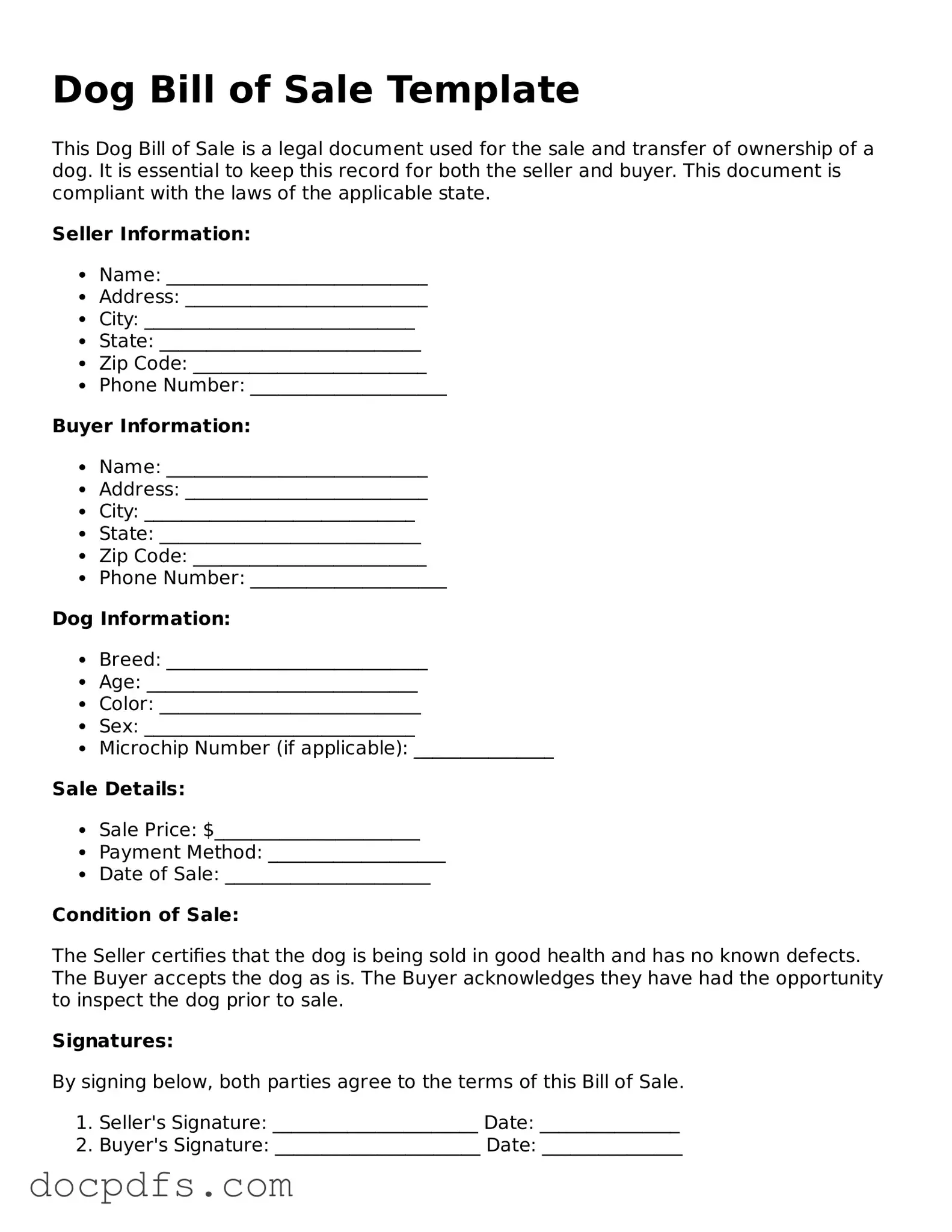What is a Dog Bill of Sale?
A Dog Bill of Sale is a legal document that serves as proof of the transfer of ownership of a dog from one party to another. It includes important details about the dog, such as its breed, age, and any identifying features, along with the names and signatures of both the seller and the buyer. This document helps protect both parties by clearly outlining the terms of the sale.
Why is a Dog Bill of Sale important?
This document is important for several reasons:
-
It provides legal proof of ownership, which can be essential for registration, veterinary care, and insurance purposes.
-
It outlines the terms of the sale, including any warranties or guarantees regarding the dog's health and behavior.
-
It helps prevent disputes between the buyer and seller by clearly stating the responsibilities of each party.
A comprehensive Dog Bill of Sale should include the following information:
-
The date of the sale.
-
The names and addresses of both the seller and the buyer.
-
A detailed description of the dog, including breed, age, color, and any distinguishing marks.
-
The sale price and payment method.
-
Any health guarantees or warranties provided by the seller.
-
Signatures of both parties to confirm the agreement.
Is a Dog Bill of Sale required by law?
While a Dog Bill of Sale is not universally required by law, it is highly recommended. Some states may have specific regulations regarding the sale of animals, and having this document can help ensure compliance. Additionally, it serves as a safeguard for both parties involved in the transaction.
Can I create my own Dog Bill of Sale?
Yes, you can create your own Dog Bill of Sale. However, it is important to ensure that it includes all necessary information and complies with your state’s laws. There are templates available online that can help guide you in creating a comprehensive document.
What if the dog has health issues after the sale?
If health issues arise after the sale, the Dog Bill of Sale can provide clarity on any warranties or guarantees made by the seller. If the seller offered a health guarantee, the buyer may be entitled to a refund or replacement. It is crucial to refer to the terms outlined in the bill of sale for guidance.
Can a Dog Bill of Sale be used for multiple dogs?
A single Dog Bill of Sale can be used for multiple dogs, but it is essential to clearly list each dog with their respective details. This ensures that there is no confusion about which dog is being sold and helps protect both parties involved in the transaction.
How should the Dog Bill of Sale be stored?
Both the seller and the buyer should keep a copy of the Dog Bill of Sale for their records. It is advisable to store the document in a safe place, such as a file cabinet or a digital storage system, to ensure it is easily accessible if needed in the future.
